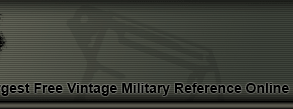WWII GERMAN FIRE FIGHTER DRESS BAYONET
The Third Reich produced a large number of edge weapons for all types of organizations.
The military forces were issued daggers, swords and bayonets.
Under the regime of the Third Reich, civilian organizations, such as the fire department and
police had a para-military nature. They were often seen as an extension of the Nazi party.
As such, they were also issued blades such as the one featured here.
The edge weapons of civilian organizations were not designed for fighting but rather as a status
symbol. The Third Reich placed alot of emphasis in ensuring that the members of the various
organizations felt pride to belong to their groups.
The high quality of manufacturing and beautiful design have made the edge weapons of Nazi Germany
a desirable military antique. Individuals from all parts of the world enjoy collecting these
items.

Dress bayonets were issued to personnel to be worn at parades and special events. these items
were built identical to their daily use counterpart but the blade is chromed and they did not
have a working mechanism to attach to the lugnut. in some cases they did not even have the
groove to attach to a 98K rifle.

|
BAYONET DESIGN
The design of the bayonet consisted of black plastic handles with a heavy checkered pattern.
Held together via the use of two silver rivets. The pommel was chromed metal. It has a shape
that vagley ressembles the beak of an eagle. There is no spring loaded button because the
bayonet cannot be attached to a rifle.
The handguard is also chromed. One side curves up while the other curves down, creating a
pleasing visual effect.
The scabbard is of metal construction. Painted black. Like the combat version ,
it has a large hook that provides an anchor point from where the leather frog can be secured.
The blade is fully chromed. It is of single edge design. It does have a full blood groove the
covers the length of the blade.
|
The parade bayonets could be customized at different levels depending on how much money the
owner wanted to spend to show his pride of belonging to the organization. Common upgrades
included the use of engraved blades and
stag handles
THE BAYONET FROG
The bayonet featured here comes equipped with a leather frog which allowed the user to attach the
bayonet to the uniform's belt.
It is of heavy duty construction. Normally black color. Heavy white cotton stitching is applied
to the sides. Four rivets provide further strength to the areas of high stress. An opening
is cut in the front to allow the scabbard's hook to pass through. The upper rivets pinch the
leather together to form the belt loop. Some frogs have stamped markings, this one does not.
|
This page is a recognition and identification guide for German bayonets. Multiple
detailed photos of a specific sample are provided. Descriptions point out specific
points that should be noted.
One of the most commonly asked questions is "How much is my German bayonet worth?".
A price guide is included here to address this question. The value of the Nazi bayonets is
reviewed over a period of several years. A trend can be observed. The present worth
of the police sword in the collector's market is illustrated.
This service is provided free of charge to the visitor/enthusiast courtesy of
MilitaryItems.com,
a company dedicated
to the preservation of military history and to providing quality military antiques and
collectibles to museums, institutions and the general public.
|
|
BAYONET MARKINGS
The logo of the manufacturer can be seen at the base of the blade of the bayonet. The design
consisted of the name "Robert Klaas", which was the manufacturer. Followed by the image of
two cranes facing each other. Just below that is the name of the city where the blade was
produced "Solingen". A large percentage of the edge weapons of the Nazi Germany were
manufactured in the city of Solingen.


Many German edge weapons are currently
reproduced.
It is becoming more difficult to be able to tell the fake ones from the real ones because
the quality of the reproductions is improving. The collector must become familiarized with
the construction style and materials employed in the manufacturing of this item.
Attention to the details is critical in order to be able to determine the authenticity of
the collectible.
If you have an interest is seeing other edge weapons of the Third Reich, you can do so by going
to our
WWII German daggers and Swords
identification guide, Where we cover blades from the Heer (Army), Navy (Kriegsmarine), Air Force
(Luftwaffe) and other organizations.
|







